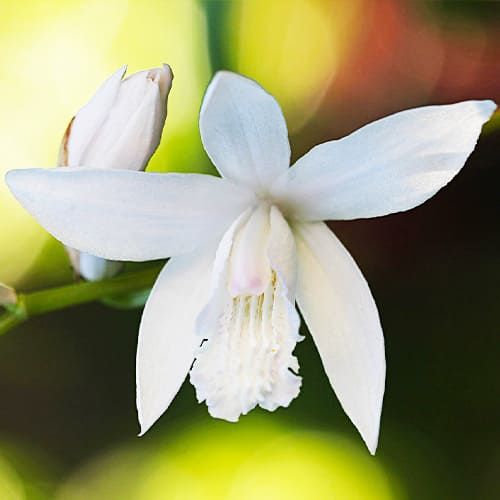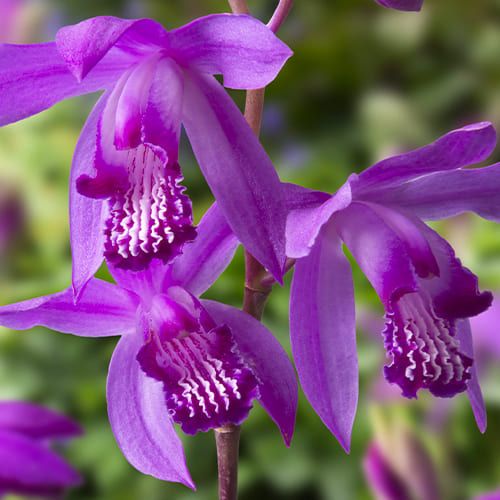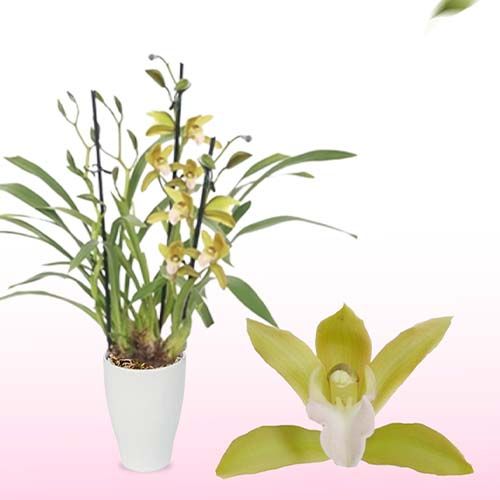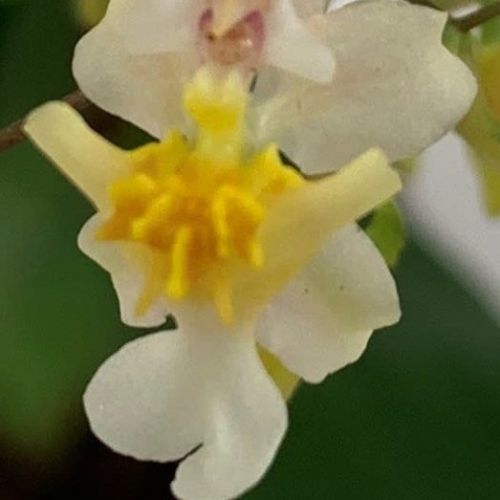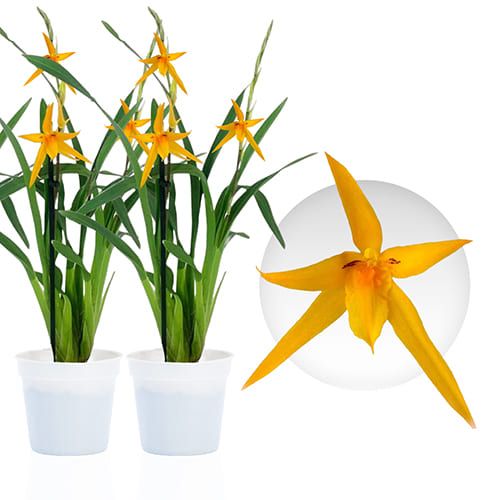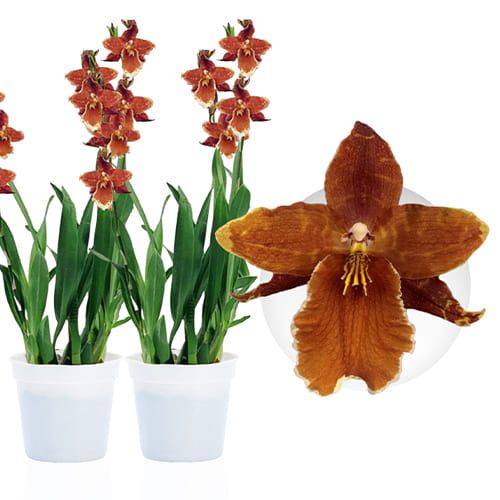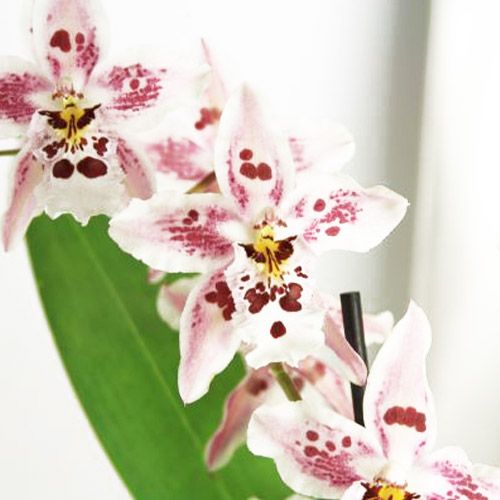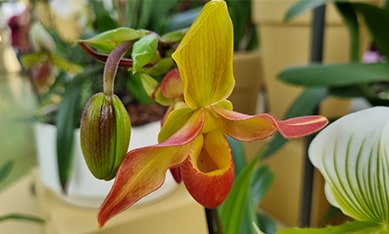
Orchids
Orchids
- -30%
 Cambria Orchids Collection (5 different varieties)Sku: 20003815 plants in pkgIn stock€65,29 €93,27
Cambria Orchids Collection (5 different varieties)Sku: 20003815 plants in pkgIn stock€65,29 €93,27 - -40%

- -30%
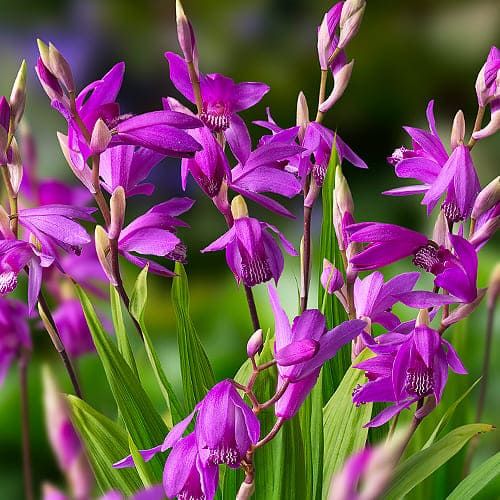

Last Reviews
Compared to the products I bought before, this product is great.
Orchid plants from Holland
Growing orchids at home will allow you to liven up your interior and give it character. With their help, you also bring some soothing greenery and fresh flowers into your home. You will find a wide range of plants in the online store DUTCH-BULBS.COM. There is also an undisputed queen of house flowers - orchids of different varieties, sizes and colours, which you can buy in a pot. This species is admired not only by true connoisseurs of houseplants. The orchid is excellent as a decoration in the home and as a gift.
Orchids are pure beauty and charm. So much so that it is impossible not to fall in love with these tiny flowers. With that in mind, we have prepared this category full of delights consisting of pink, white, yellow, blue orchids and more. There is an old legend that the orchid came from the shards of a broken rainbow.
Orchids (Jatrachidaceae) are a representative of monocotyledonous plants. There are about 50,000 different species of orchids worldwide, of which about 20,000 occur in nature, and another 30,000 were created by interspecific hybridization.
You will find orchids of all types and origins for sale. Phalaenopsis, cymbidium and Dendrobium are the room orchid species most commonly found in the flower market. But they are not the only and, above all, not the only fascinating orchids.
Most species are found in tropical or subtropical areas of Asia, Central America and South America. And only 15% can grow in nature in temperate and cold regions. Most species are epiphytes, so they have aerial roots on tree trunks. You can also find lithophytes - capable of living on rocks or soil.
The leaves of orchids are solid and linear. The roots, especially in tropical species, are airy and absorb atmospheric moisture. European and Mediterranean species, on the other hand, are predominantly lithophytic with underground roots consisting of tubers.
What does the flower look like?
Orchids are known for their elegance and the perfect symmetry of their flowers. They have a typically winged structure with three upper cup-shaped bowls and three lower petals, one of which is different in size to attract pollinating insects. Orchid flowers are unique, and they last a long time. It depends on each species, but the flowers of the most famous orchids are happy for up to three months. They usually start blooming in late winter, mainly between February and March.
The price of orchids also attracts attention. Some species are cheap, such as those in the genus Dendrobium, which can be bought starting at $5. However, some rarer species of orchids, such as Paphiopedilum, can cost over $7,000.
When buying flowers, consider how often you need to water them and whether they like a sunny or more shady location. Vases also make an excellent gift for loved ones.
Which varieties, species and species of Orchids to buy?
In our catalogue, you can easily choose plants by required parameters. So, in the category "Orchid seedlings", there are both cheap varieties and varieties at a premium price. The convenient filtering system allows you to specify your choice according to various characteristics. You can easily find Morel's Miltonia orchid in our online store, as well as other orchid species and varieties with photos.
Dendrobium (Dendrobium).
This genus has numerous species (about 1200) and is one of the most common. The most often cultivated varieties are Dendrobium Nobile, D.speciosum and D. Phalaenopsis. This species is the largest of all orchids and is characterized by its elegant flowers, their colour variety and the number of floral inflorescences that grow from its stem. This genus forms a large pseudobulb from which emerges a stem that can be more than 30 cm long. Dendrobium looks a bit like a reed.
Cymbidium (O. Cymbidium)
Cymbidium (O. Cymbidium) is a popular orchid species and the most unpretentious. It comes from the foothills of the Himalayas and therefore likes excellent growing conditions. They are reliable plants that grow without problems if we offer them a reasonably well-lit room with low temperatures. Cymbidium blooms once a year, but the flowers stay on the plant for 1 to 3 months. When all the flowers have bloomed, and the shoot has withered, it can be cut back, taking care not to damage the pseudobulb and the leaves. This type of orchid does not form inflorescences a second time from the same pseudobulb, and they only appear from new pseudobulbs that mature at certain times of the year.
Cambria (O. Cymbidieae). Such an orchid does not exist in nature. Cambria Cambria is falsely used in Europe to describe modern hybrids of the orchid Odontoglossum alliance (Odontoglossum alliance.) and Oncidium (Oncidium). All combinations offer a wide range of colour patterns and flexibility in cultivation. They can be grown at home or in a sheltered spot in the garden. The only true Cambria in nature is the Vuylstekeara Cambria Plush.
Cattleya (Cattleya).
Like most other cultivated orchids in the home, cattleyas are epiphytes or plants that grow on trees. They have well-developed water-storing organs (pseudobulbs) and large, fleshy roots. Cattleya's discovery was an accident. In the nineteenth century, a collector of mosses and lichens collected some random hardy leaves from the forest as packing material to protect his collections from Brazil to England. Horticulturist William Kattley saw the strange packing material and decided to grow it. A few years later, the strange plant bloomed; and its flowers shocked the world. The genus was named Cattleya as a tribute to collector William Cattley, and the plant itself became known as Cattleya labiata.
How to take care of and grow Orchids?
Room orchids have always had a reputation as complex plants to grow, but we'll show you that they will grow and thrive in your home year after year with a few simple tips.
This plant likes lots of light and fresh air, indoor humidity, regular watering and no drafts. Some varieties need extra light in the winter, and others need excess moisture in the summer.
Orchids prefer soils that tend to be acidic, soft and breathable, but with few mineral elements. The optimal ground is a mixture of peat, sphagnum, coconut fibres, fern roots and pine bark. This mixture should be used primarily for terrestrial species. And for epiphytes, it serves only as support. Or use only pine bark with moss. Some species do not need soil at all. For example, the Wanda orchid grows without substrate in suspension.
Orchids do not need a lot of nutrients. For feeding, you can use a fertilizer that contains twice as much nitrogen as phosphorus and potassium. Depending on the season and species, you should apply it once every seven days to once a month. Epiphytic orchids get the minerals they need to develop from the rainwater that flows through the branches. Therefore, you should use a fertilizer specifically designed for them at home and apply it by spraying over the foliage and roots.
Most orchids should be placed in a lighted area. But where they are not exposed to direct sunlight. We recommend placing the plants near a window, avoiding sources of heat and currents. If the sun shines excessively at any time of the day, net curtains are sufficient to filter the light. Good lighting will encourage the plant to bloom and grow.
And do you know why some species of orchids (such as phalaenopsis) are often sold in clear pots with lots of roots? Because the roots also carry out photosynthesis, conveniently, they are not in containers with shaded walls. Therefore, in transparent containers, more light reaches their roots. Consequently, we recommend using glass or glass pots with good drainage.
When growing orchids, temperature needs should be considered. There are warm-loving (tropical) and cold-loving species. Temperatures that are too different from what the plant needs can cause deformities in the leaves and flowers. Even humidity can cause problems. If too humid, there are spots on the flowers. If low, there is yellowing and shrivelling.
It is better for species with aerial roots to moisten the air than the substrate. Therefore, before watering a particular species of orchid, it is necessary to know its origin. Watering should be 2 to 4 times a week in heated rooms and hot seasons. In cold seasons once a week is enough (for warm-loving species).
To care for everyone's favourite phalaenopsis, as well as most indoor orchids, you should first familiarize yourself with the description of the plant. In nature, it develops well in humid conditions. Water this plant preferably at dawn or dusk, when the stomata (micro-holes located on the underside of the leaves) of the leaves are open and absorb moist air.
Transplanting orchids is carried out as needed. The soil is prepared from pine bark, gravel, fallen leaves, moss.
The most popular pests of orchids: scale, aphids, thrips, spider mite, mealybug, etc.
Orchids should be pruned to remove dry stems when necessary, dried leaves and flowers.
Decorate your home with orchid flowers
In the days of the aristocrats of Victorian England, orchids were associated with elegance, exclusivity, luxury and, above all, beauty. Today they are among the essential ornamental flowers in the world.
Because of its appearance, the potted orchid will fit perfectly into minimalist spaces. It will add some freshness and colour to your entryway, kitchen or bathroom. The bright, rich colour of its petals will give the interior a unique look. You can keep the plant in clear pots and baskets and lattices made of wooden slats.
A collection of several orchids of various colours is a real feast for the eyes. And even the biggest sceptics begin to shine and smile when they see these flowers.
Frequently asked questions about Spring Flowering Orchids
How to care for an orchid?
Repotting an orchid?
Repot every 2-3 years in a larger pot.
How to water an orchid?
Once a week, place in a saucer with water and let the plant absorb the water.
How long do orchid flowers last?
Depending on the variety between 2 weeks and 3 months.
Where can I buy orchids from the Netherlands?
The orchids in our online shop come from the Netherlands, which is known for its high-quality flower bulbs and plant breeding. We source our bulbs from trusted suppliers to ensure they are of high quality.












